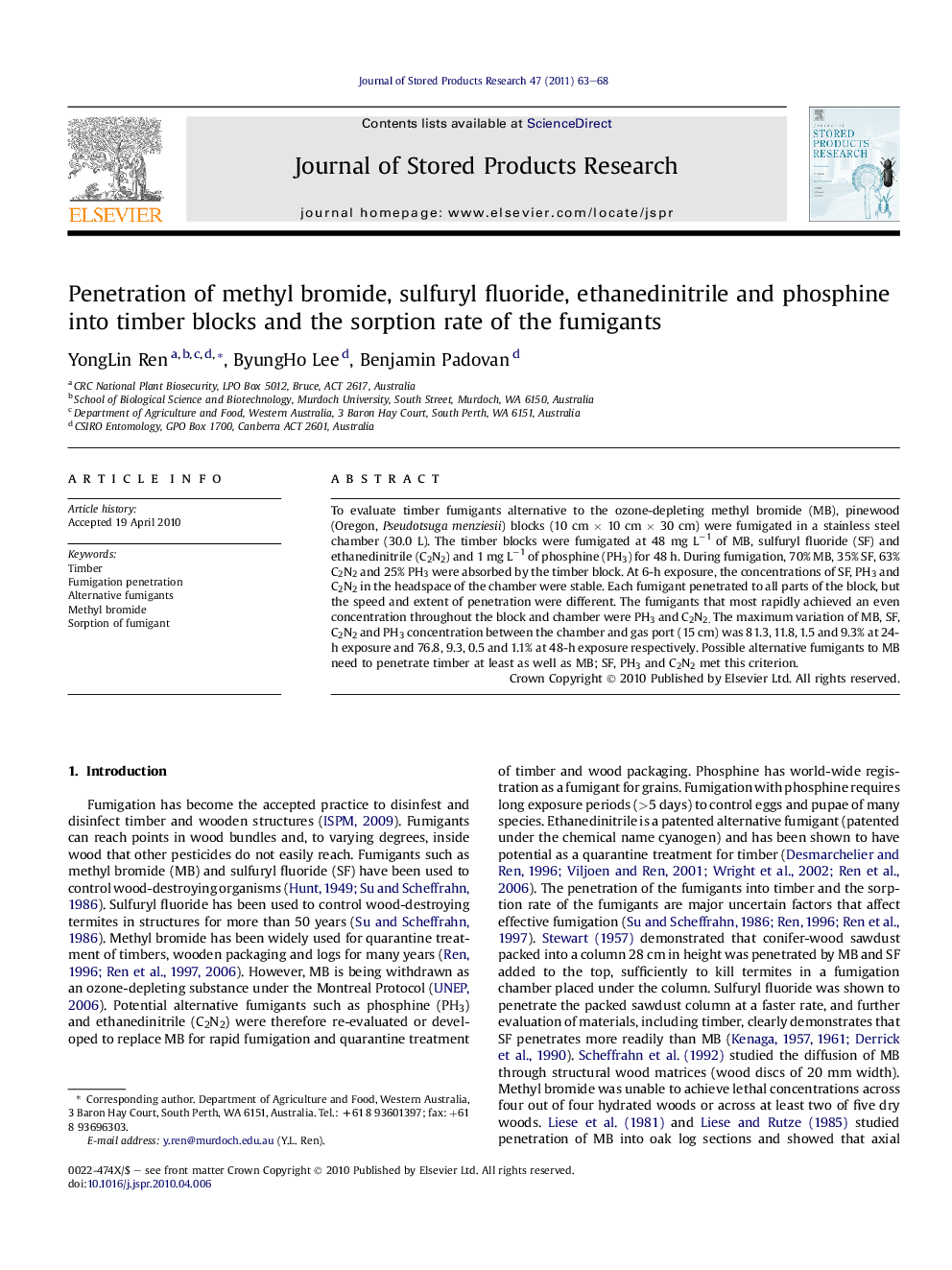| Article ID | Journal | Published Year | Pages | File Type |
|---|---|---|---|---|
| 4517255 | Journal of Stored Products Research | 2011 | 6 Pages |
To evaluate timber fumigants alternative to the ozone-depleting methyl bromide (MB), pinewood (Oregon, Pseudotsuga menziesii) blocks (10 cm × 10 cm × 30 cm) were fumigated in a stainless steel chamber (30.0 L). The timber blocks were fumigated at 48 mg L−1 of MB, sulfuryl fluoride (SF) and ethanedinitrile (C2N2) and 1 mg L−1 of phosphine (PH3) for 48 h. During fumigation, 70% MB, 35% SF, 63% C2N2 and 25% PH3 were absorbed by the timber block. At 6-h exposure, the concentrations of SF, PH3 and C2N2 in the headspace of the chamber were stable. Each fumigant penetrated to all parts of the block, but the speed and extent of penetration were different. The fumigants that most rapidly achieved an even concentration throughout the block and chamber were PH3 and C2N2. The maximum variation of MB, SF, C2N2 and PH3 concentration between the chamber and gas port (15 cm) was 81.3, 11.8, 1.5 and 9.3% at 24-h exposure and 76.8, 9.3, 0.5 and 1.1% at 48-h exposure respectively. Possible alternative fumigants to MB need to penetrate timber at least as well as MB; SF, PH3 and C2N2 met this criterion.
► Pinewood blocks (10 cm × 10 cm × 30 cm) were fumigated in a stainless steel chamber. ► Fumigation with 48 mg L−1 of methyl bromide (MB), sulfuryl fluoride (SF) or ethanedinitrile (C2N2) or 1 mg L−1 of phosphine (PH3) lasted for 48 h. ► Each fumigant penetrated to all parts of the block, but the speed and extent of penetration were different. ► The fumigants that most rapidly achieved an even concentration throughout the block and chamber were PH3 and C2N2.. ► Possible alternatives to MB which penetrate timber at least as well as MB are SF, PH3 and C2N2.
